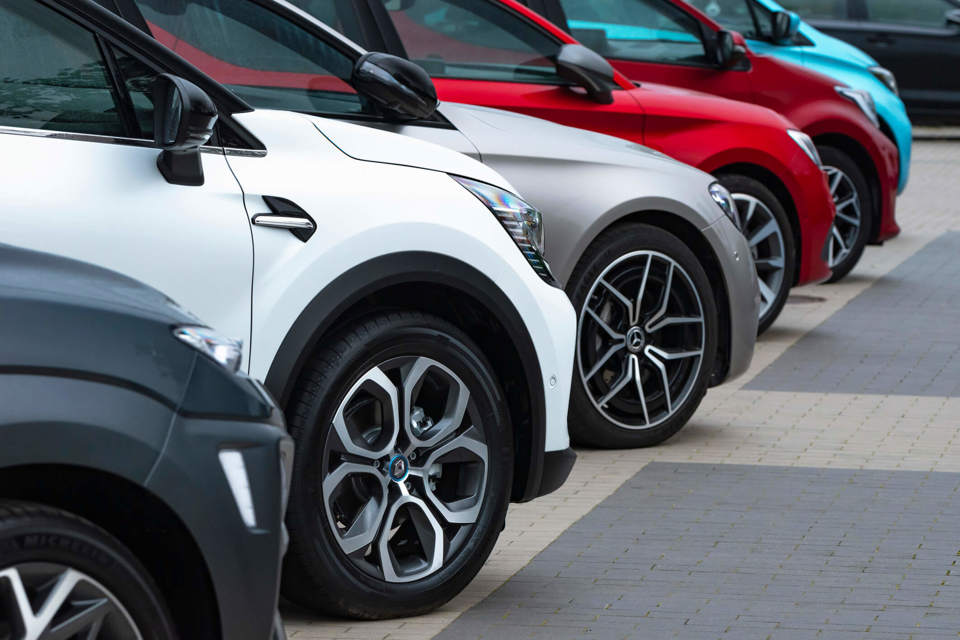The widespread rewriting of company car choice lists to tackle new issues around plug-in hybrids (PHEVs) and double cab pick-ups is expected following the Budget.
The Association of Fleet Professionals (AFP) says that tax changes announced by the Chancellor, Rachel Reeves, mean that the viability of both types of vehicles will now be questioned by many fleets.
Paul Hollick, chair at the AFP, said: “The Budget can be viewed as something of a tidying-up operation by the Government when it comes to company cars.
“The moves made on PHEVs and double cabs, as well as arguably on dealer employee car ownership schemes, have largely removed any grey areas.”
New company car tax tables show that for vehicles with CO2 emissions of 1-50g/km will have a benefit-in-kind (BIK) tax rate of 18% in 2028/29 and 19% 2029/30.
For a PHEV capable of up to 69 miles zero-emission driving, that will mean a seven percentage point year-on-year increase in BIK.
Double cab pick-up trucks, meanwhile, will be treated as company cars for tax purposes, dramatically increasing the tax paid by drivers.
The change will be implemented from next April, but grandfather rights will apply to existing users until the 2029/30 tax year at the latest.
“The Government is making it pretty clear that it wants all company car drivers behind the wheel of a zero emissions electric car while paying benefit in kind at the standard rate,” continued Hollick. “Almost anything that resembles a departure from this model has gone.
“There’s an argument that this provides a high degree of clarity for fleets but it does also mean that some drivers and employers are facing some big bills unless action is taken, and when it comes to PHEVs and double cabs, this is likely to lead to widespread redrawing of choice lists with a renewed emphasis on EVs.”
Drivers who have recently taken on a PHEV on a four-year cycle will see their tax rise massively in its last year. Hollick believes many PHEV company car drivers will be wanting to talk to their employer about the possibility of getting out of that car earlier.
He explained: “The situation for double cabs is perhaps less acute, because of the grandfather rights situation, but anyone still in a double cab after April 2029 is going to see an exponential increase in their tax.
“It’s possible that these vehicles will almost disappear from car fleets, although there is arguably some clarification needed if they are used strictly for work purposes only and taken home at night.”
The AFP did, however, welcome the publication of a further two years of BIK tables up to 2030. “This is something that we have been requesting for some time because it means that fleets can plan for the future with certainty,” said Hollick.
“While we don’t want to see benefit in kind on electric cars rise to 9% by 2029/30, we’ve accepted for a while that this will have to happen at some point, and the process appears to be being managed by the government in a structured and responsible manner.
“Looking at these new tax tables, the ZEV Mandate, the strengthening of EV favourability under Vehicle Excise Duty, extending 100% first year allowances and more, the Government could not be making it clearer across a range of policy that fleets should be looking entirely at zero emissions electric cars.
“When employers start redrawing choice lists, this should be treated as a central fact.”
Peter Golding, managing director at FleetCheck, says there has been a wave of new PHEVs arriving during the past year that have a much-increased electric-only range.
“Quite a few drivers have seen these cars as a useful stepping stone to going fully electric,” he said, “sidestepping concerns about range anxiety and the charging infrastructure, and they have made their way onto an increasing number of choice lists.
“It’s pretty clear from the Budget that the Government wants to strongly discourage this line of thinking.
“While there is probably only a couple of percentage points difference in benefit in kind between an EV and PHEV for a driver today, that rises to a difference of 7% and 18% in four years. Not many people are going to want to pay that bill.”
He concluded: “Where the new wave of PHEVs probably remain likely to find sales is in the private sector.
“Individual consumers are showing quite a high level of resistance to EVs for a variety of reasons and PHEVs provide a solution, as long as people are willing to pay the newly increased first year vehicle excise duty.”





















Login to comment
Comments
No comments have been made yet.